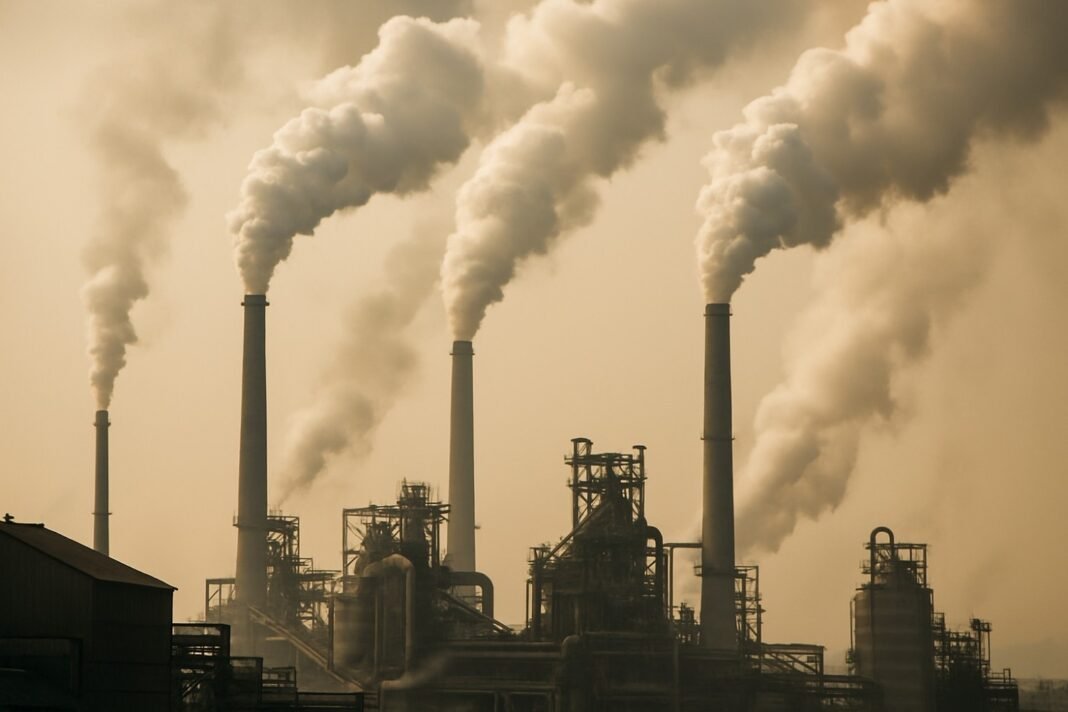Industrial Growth Slows More Than Expected
India’s industrial sector showed signs of weakening in June, as the country’s Index of Industrial Production (IIP) recorded a tepid growth of 1.5% year-on-year, data released by the Ministry of Statistics and Programme Implementation (MoSPI) revealed on Monday. This figure is lower than the revised 1.9% growth reported in May and falls short of analysts’ expectations of a 2.2% increase, according to a Bloomberg survey.
The IIP, which serves as a crucial barometer for measuring the performance of key industrial sectors, has now registered sub-2% growth for two consecutive months. The June numbers underline concerns over a sluggish recovery in industrial momentum despite broader macroeconomic stability.
Manufacturing Activity Sees Annual Decline
The biggest drag on the industrial output came from the manufacturing sector, which accounts for the largest share of the IIP. Manufacturing output contracted sharply by 3.9% in June on a year-on-year basis. This is a significant deterioration from the 3.5% contraction seen in June last year, and signals deepening challenges in the sector.
Several industries within the manufacturing segment, particularly those related to capital goods, textiles, and consumer durables, have faced a slowdown in demand both domestically and globally. High input costs, supply chain disruptions, and weak export orders continue to plague manufacturers, despite a fall in commodity prices in recent months.
Mining Sector Also Under Pressure
Adding to the industrial slowdown, the mining sector witnessed a steep contraction of 8.7% in June, reversing the 10.3% growth recorded in the same period last year. This reversal underscores the volatility in mining output, which is often affected by monsoon-related disruptions and fluctuations in mineral demand.
Experts suggest that the significant year-on-year decline may also be due to a high base effect from last year, when post-pandemic reopening had triggered a spike in mining activity. Nevertheless, the sharp fall is likely to raise concerns about its downstream impact on industries dependent on raw materials like coal, iron ore, and other minerals.
Electricity Generation Dips After Growth
The electricity sector, typically seen as a reliable indicator of economic activity, also reported a decline in output. Electricity generation contracted by 2.6% in June compared to an 8.6% increase in the same month last year. A combination of factors including lower industrial consumption, monsoon-related demand shifts, and operational constraints at certain power plants may have contributed to this fall.
This drop in electricity output raises red flags as it hints at weakening industrial demand and slower usage in the commercial sector. With the rainy season in full swing during June, cooling-related power demand may also have moderated, contributing to the downturn.
Analysts Voice Concern Over Slowing Momentum
Economists and market analysts have expressed concern over the broad-based weakness seen across industrial sectors. “The contraction in manufacturing and sharp declines in mining and electricity suggest that India’s industrial recovery is facing considerable headwinds,” said an economist at a leading financial services firm.
Several analysts also pointed out that the weaker-than-expected IIP data could influence the Reserve Bank of India’s (RBI) outlook on growth and monetary policy. While inflation remains a primary concern for the central bank, slowing industrial growth could tilt the balance toward a more accommodative stance in the coming months.
Outlook Hinges on Policy and Global Demand
Going forward, the trajectory of industrial output will likely depend on a mix of government policy measures, external demand conditions, and the pace of investment in infrastructure and manufacturing. The government’s continued focus on production-linked incentive (PLI) schemes and infrastructure development may provide some cushion to the sector.
However, with global uncertainties, including slowing growth in developed markets and ongoing geopolitical tensions, external demand may remain muted. Domestic demand too will need sustained policy support, particularly in sectors like capital goods and consumer durables, to revive momentum.
As India navigates through these mixed economic signals, the industrial sector remains a critical area to watch in the country’s broader growth narrative








